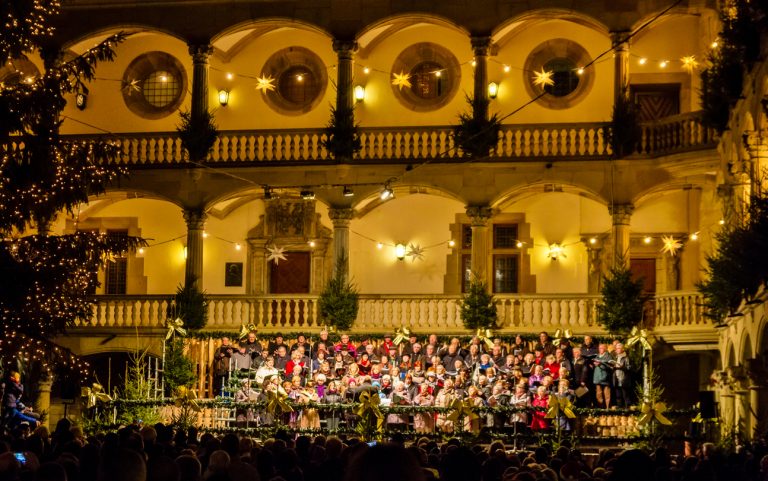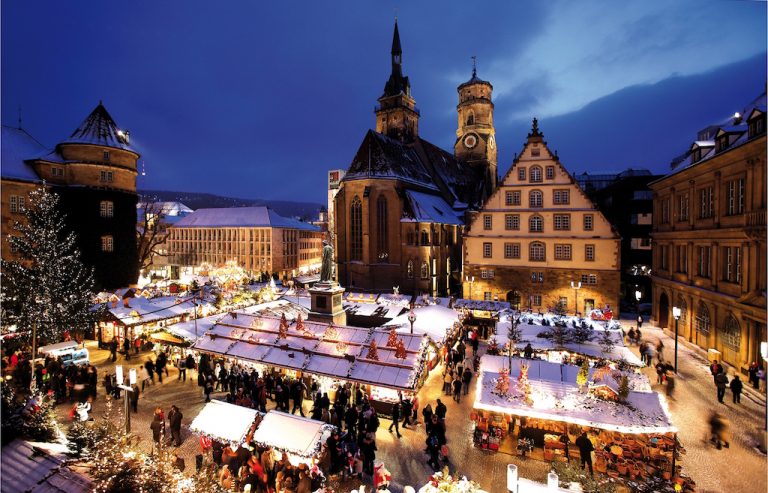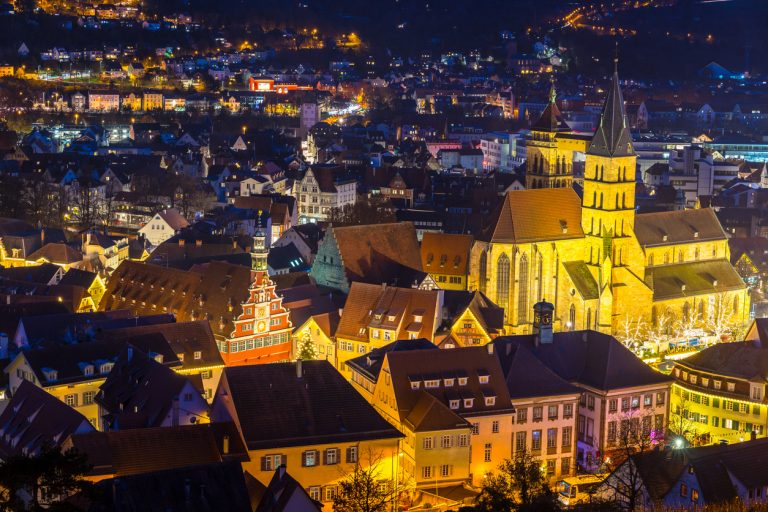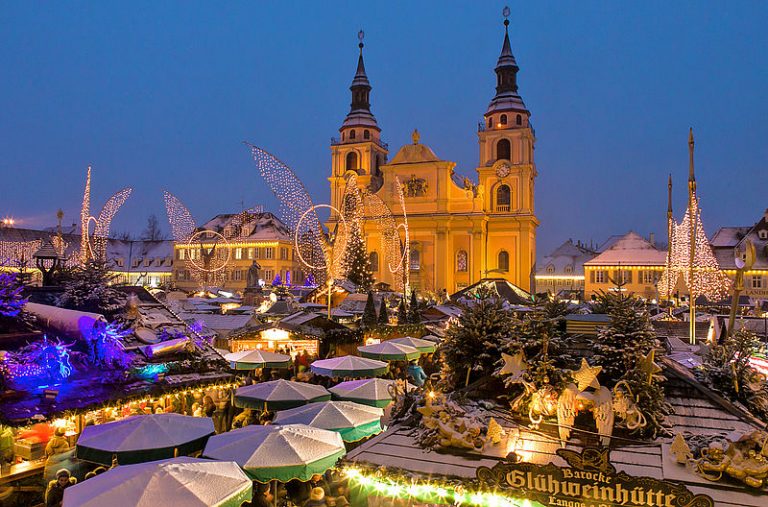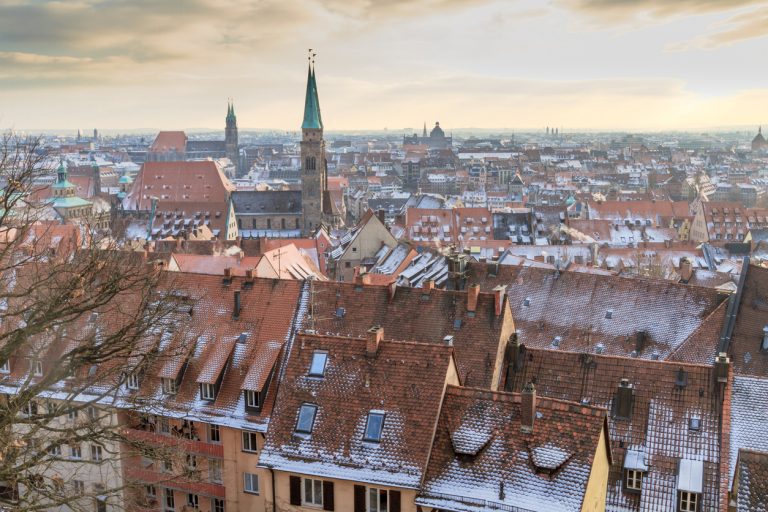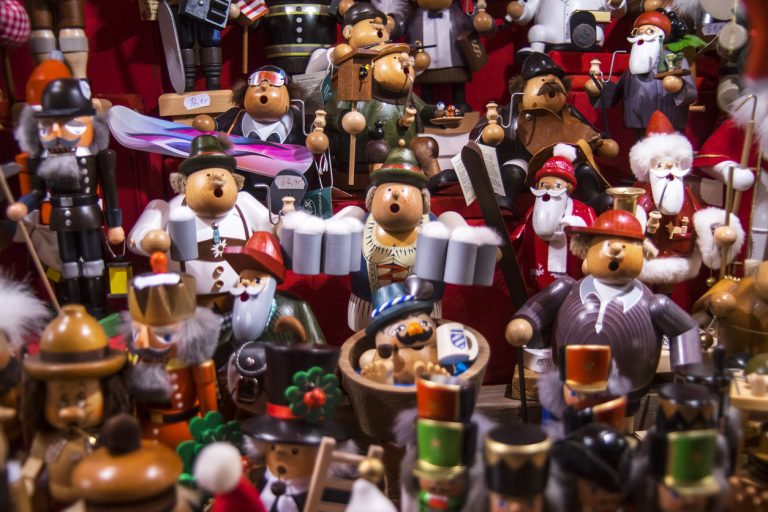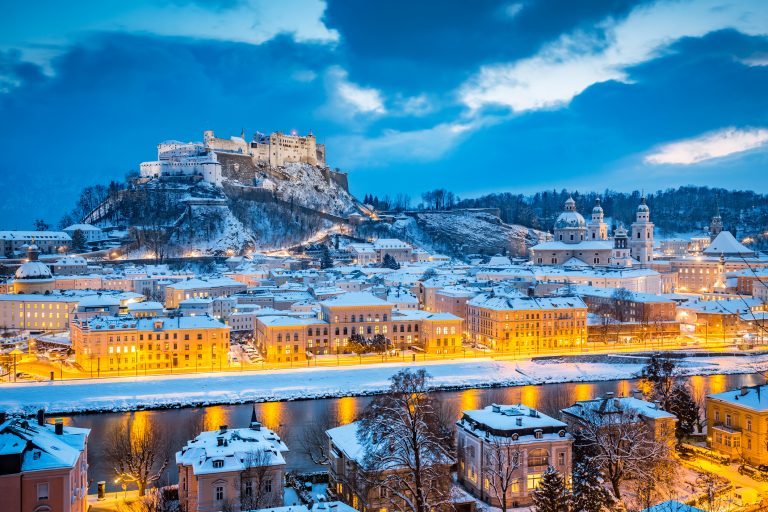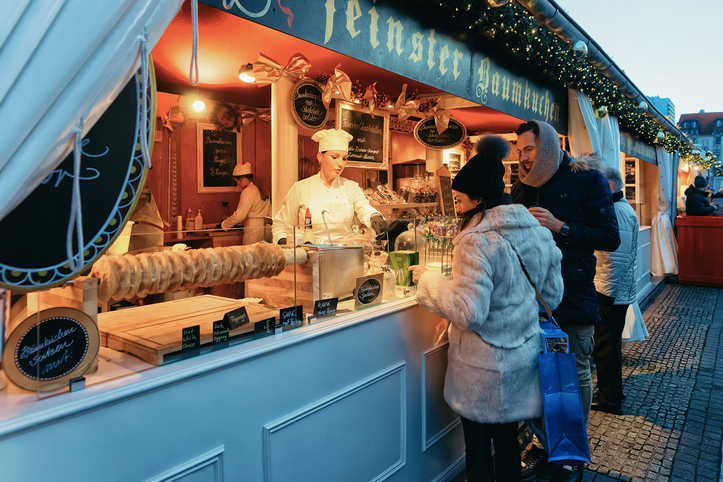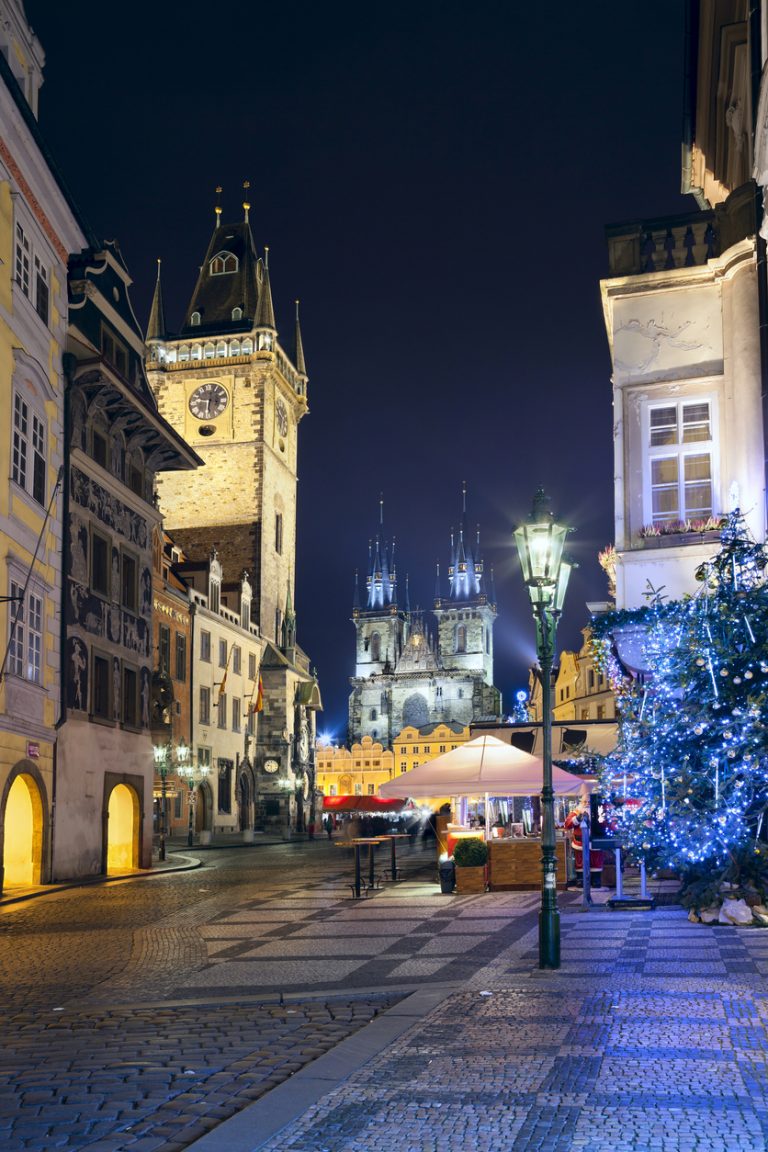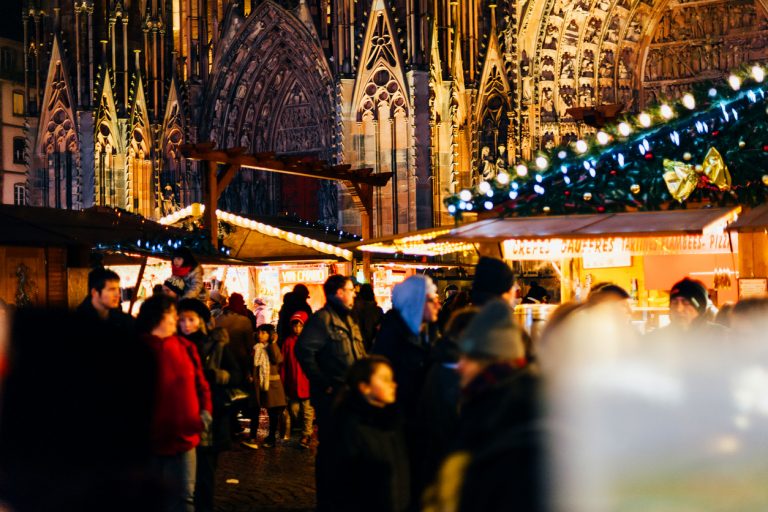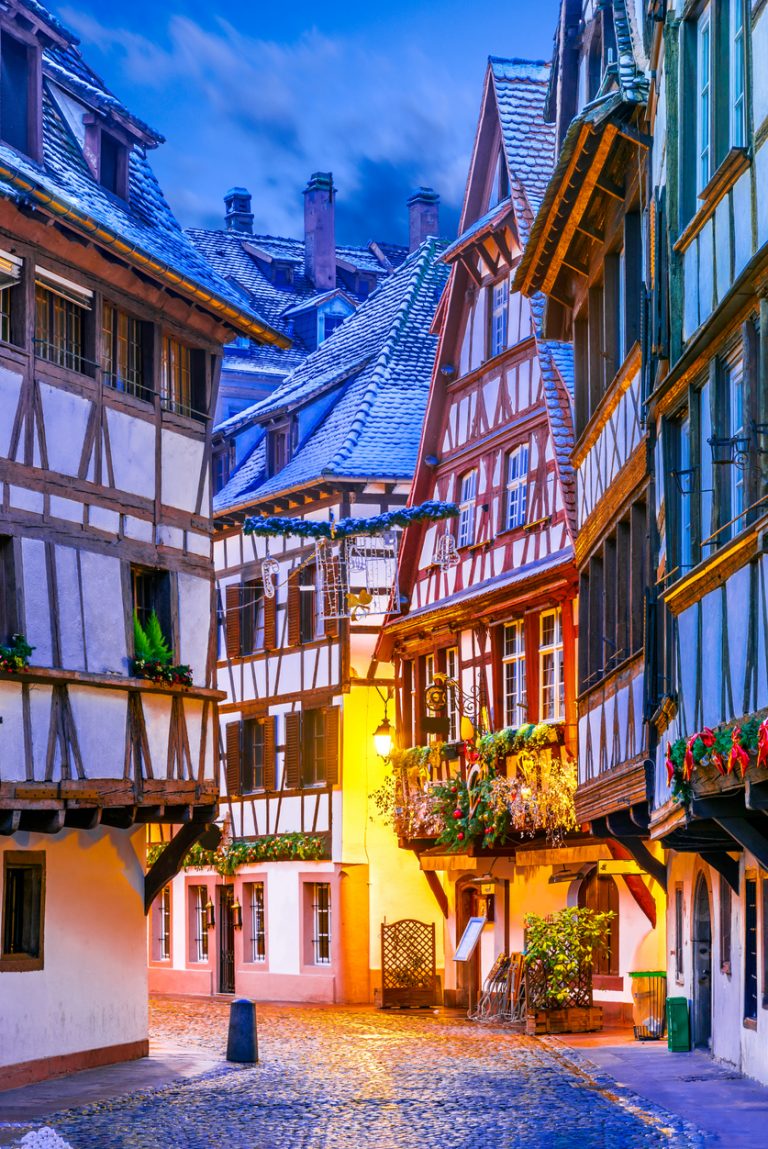Prague, Czech Republic
What’s better than visiting one of Europe’s grandest cities? How about seeing that city glowing with festive spirit. And make no mistake, Prague, which is normally a remarkably grand city, takes things up a notch when Christmas rolls around. The Czech capital is known for being a place of good fun and that’s just amplified with the lead up to Christmas.
Prague is a somewhat spread out city with interesting districts on both sides of the Vltava River, so it makes sense that it’s also home to quite a few Christmas markets. That being said, the main two Christmas markets of Prague are found by the city’s Old Town with the central Old Town Square and the great long Wenceslas Square.
The Czech people are famously the world’s biggest drinkers, so the great number of options for alcoholic drinks shouldn’t be a surprise. Along with hot mulled wine, a staple of Europe’s Christmas markets, you’ll also find mead, punch and grog, a concoction of rum, lemon, sugar and hot water. While there are plenty of foods to soak up the alcohol like sausages, pancakes and trdelník chimney cakes, perhaps the most popular is the simple ham on a spit.
Strasbourg, France
Come Christmastime in France you may be thinking of cities like Paris and Lyon, but it turns out that the Strasbourg Christmas markets are the place to be. Nestled by the border between France and Germany, Strasbourg is widely regarded to be one of Europe’s best places to visit in the winter and around Christmas. It may not be a part of France that you have considered visiting before, but the festive season will have you looking at it in a whole new light.
For starters, the Strasbourg Christmas markets known as Marché de Noël are simply massive, with over 300 wooden stalls spread throughout the city’s historical center. There are even themed markets depending on which part of the city you’re visiting, such as “Magical Christmas”, “Alternative Christmas” and “Secret Christmas”. Generally though, the Strasbourg markets place an emphasis on the regional traditions of Alsace, making it a distinctly local experience. Besides seeing the different market themes, jumping from one market to the next allows you the chance to enjoy all the city’s magical illuminations that decorate streets, houses and churches alike.
Budapest, Hungary
In recent years, one central European city has soared up the ranks of the best Christmas markets in Europe – Budapest. The Hungarian capital city has really come into its own as a major tourist destination the last few years, surely in no small part thanks to its Christmas celebrations. It’s easy to see the appeal of spending your days in Budapest sightseeing and soaking in the famous thermal baths and then your nights eating and drinking under Christmas lights.
And there is one thing that’s really special about Budapest’s Christmas markets: Real care is taken in making traditional handcrafts like glass-blowing, candle-making and leatherwork, as well as traditional Hungarian embroidery. It should become clear that here in Budapest, genuine traditional goods are emphasized over mass-commercial products because they celebrate and showcase Hungarian traditions. You’ll want to save space in your travel luggage for these souvenirs, that’s for sure.

